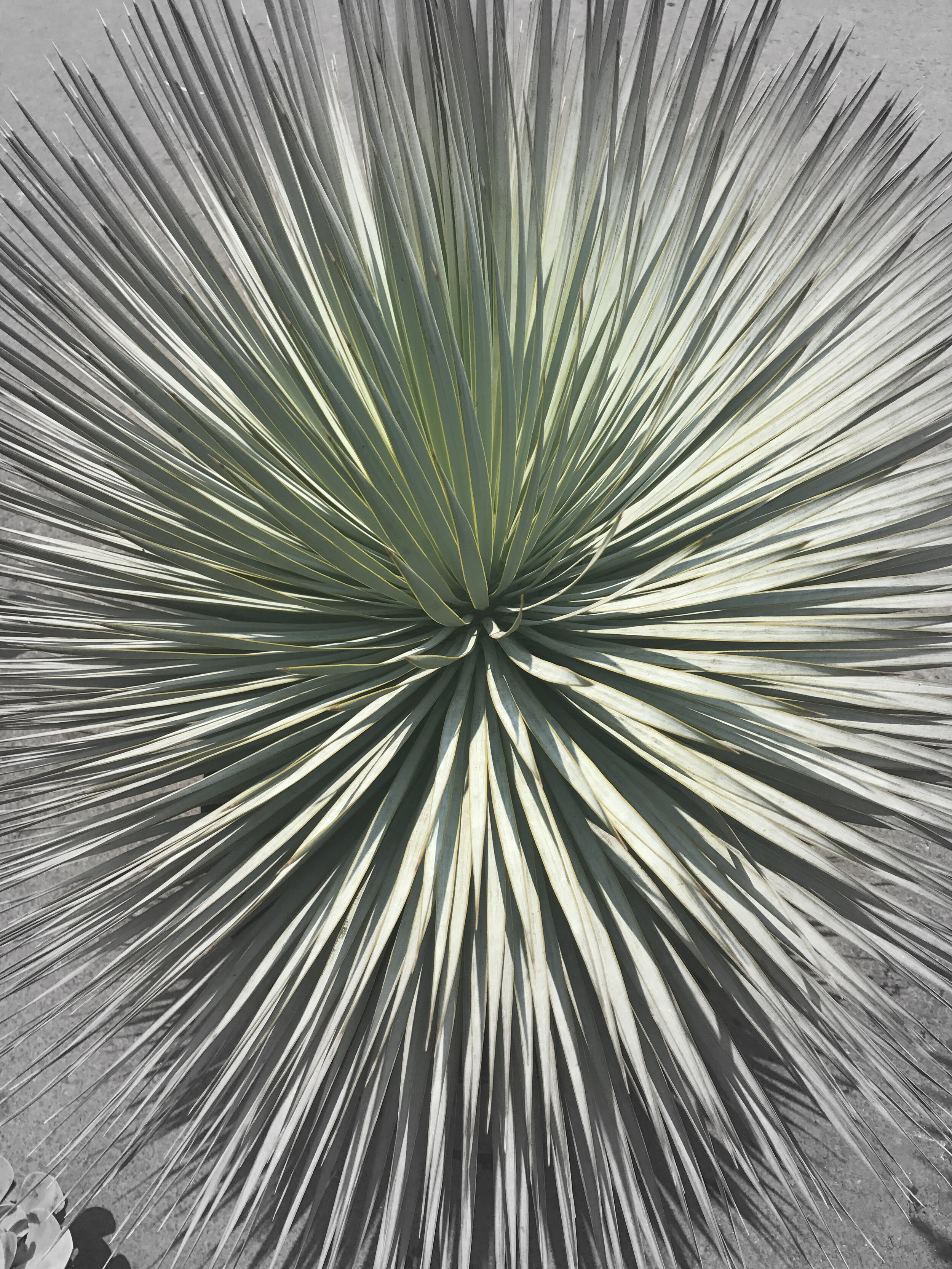
Planting for Oceania: Research as Resource
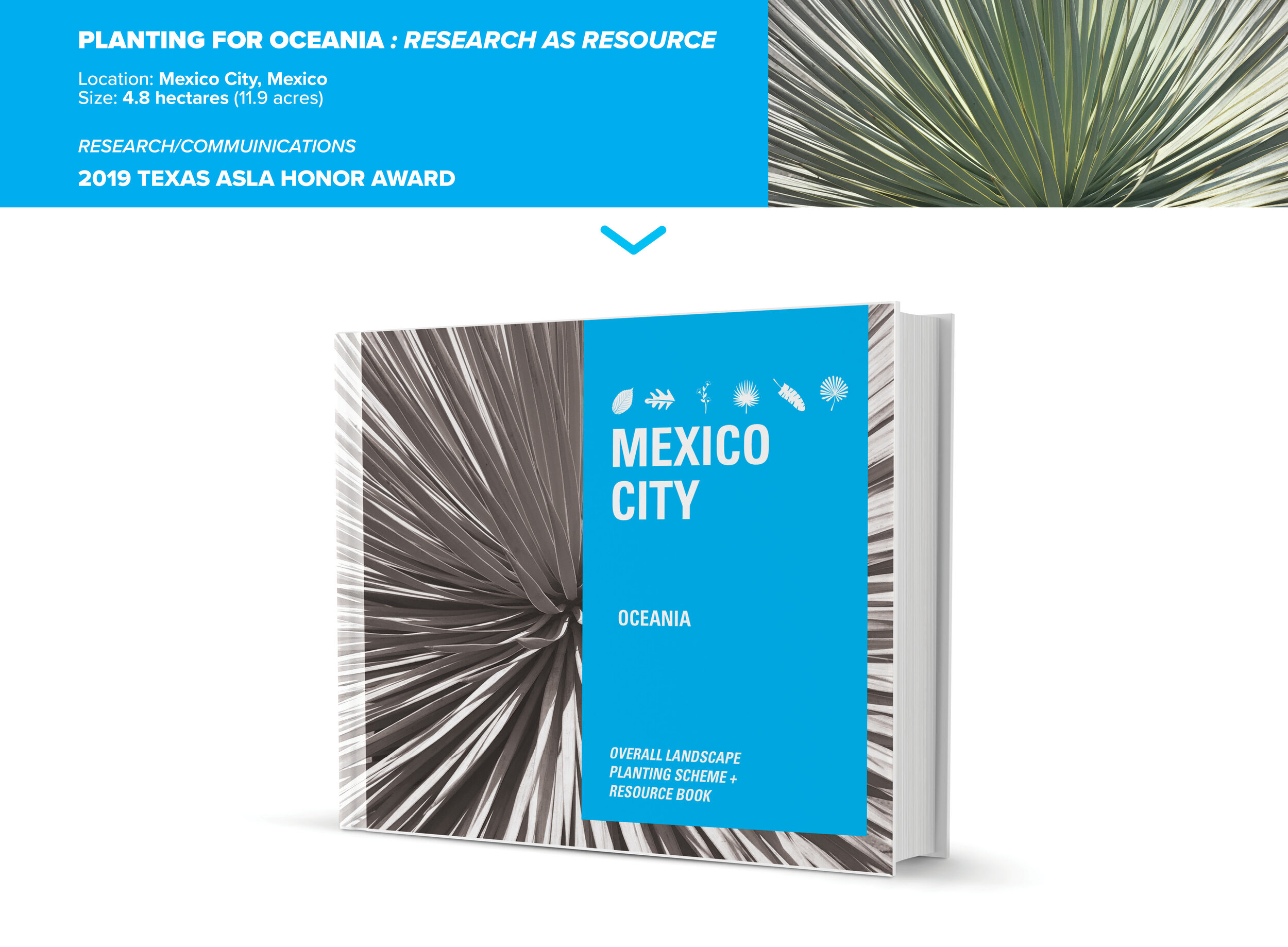
The Oceania plant book for Mexico City is a graphic communication piece to engage clients to help them understand comprehensively the project design as well as a tool for owners to be able to update the planting design of the retail spaces without undermining the original design intent. The design team performed extensive on-the-ground research in order to build a comprehensive plant palette based on horizontal and vertical applications in a variety of growing conditions. The final product becomes a resource for the life of the project and a tool for understanding and appreciating the original design.
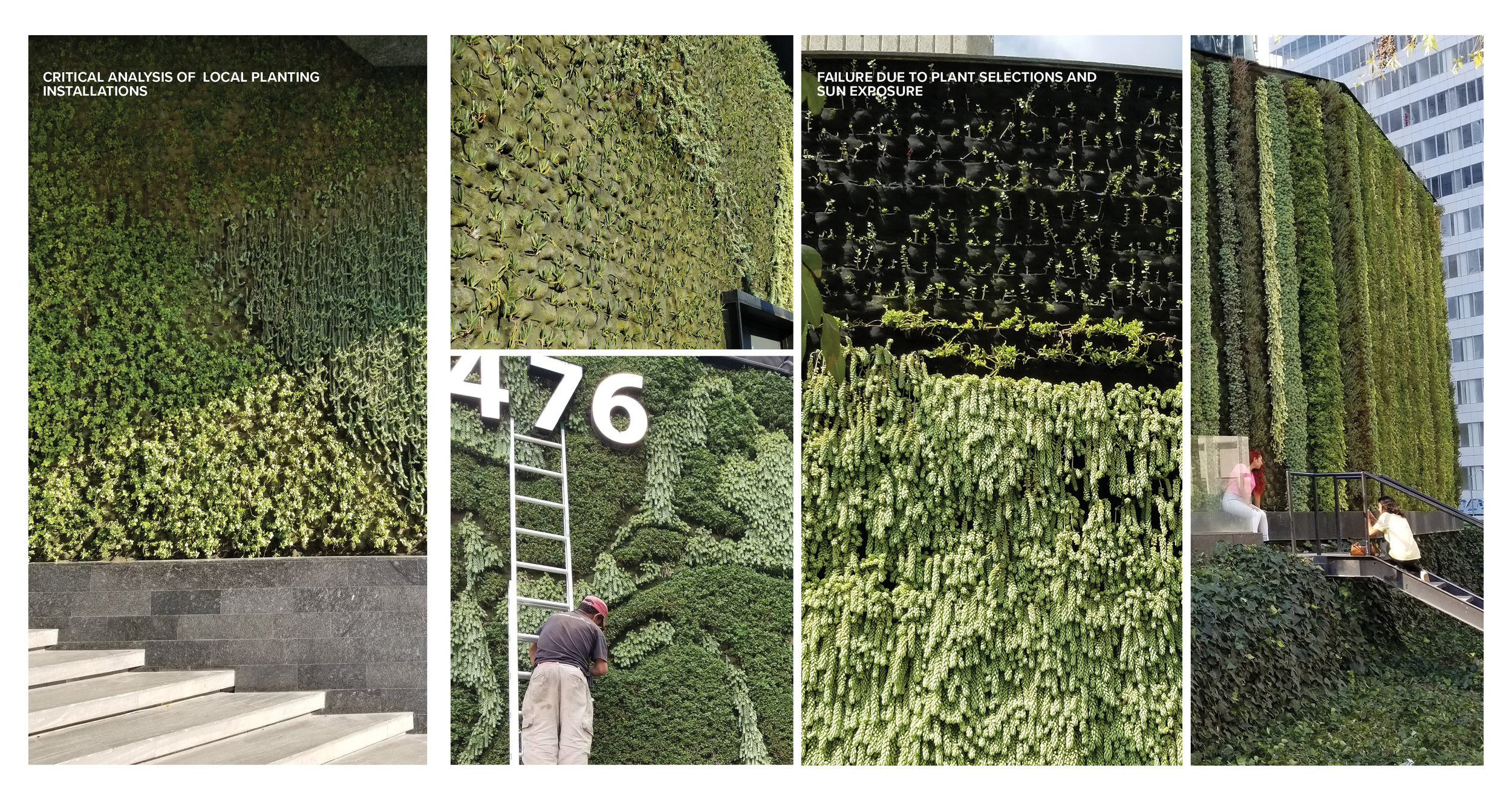
One of the initial large components of the design project that led to the production of the resource book, was the inclusion and design of significant green walls on a curving façade. The design team conducted an extensive survey of existing green wall projects in Mexico City to understand the common construction techniques, plant species used, and types and methods of failure. This information was used to develop a robust plant palette that emphasized species with proven success, but also explored previously unused species, yet locally available species with comparable characteristics for testing in mock-ups.
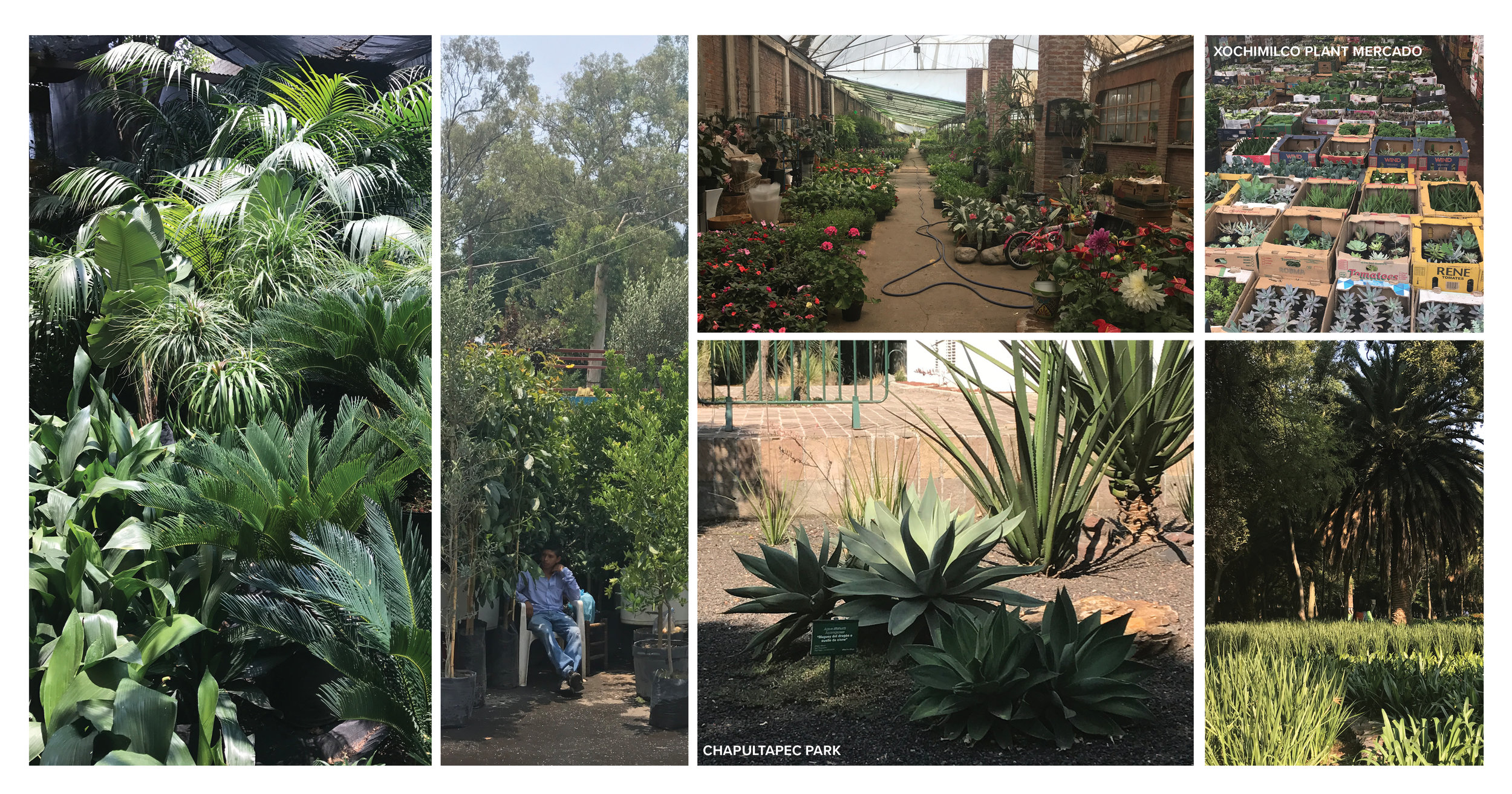
Visits to major public spaces, comparable developments, plant growers, and vast plant markets provided the basis for the ‘horizontal’ plant palette. Documentation of plants in context as well as a comprehensive look at local availability with the consideration in maintenance trends, became a valuable resource for the project owner. This opened up constructive early conversation about species combinations with the team, including the project construction manager, before design and documentation occurred.
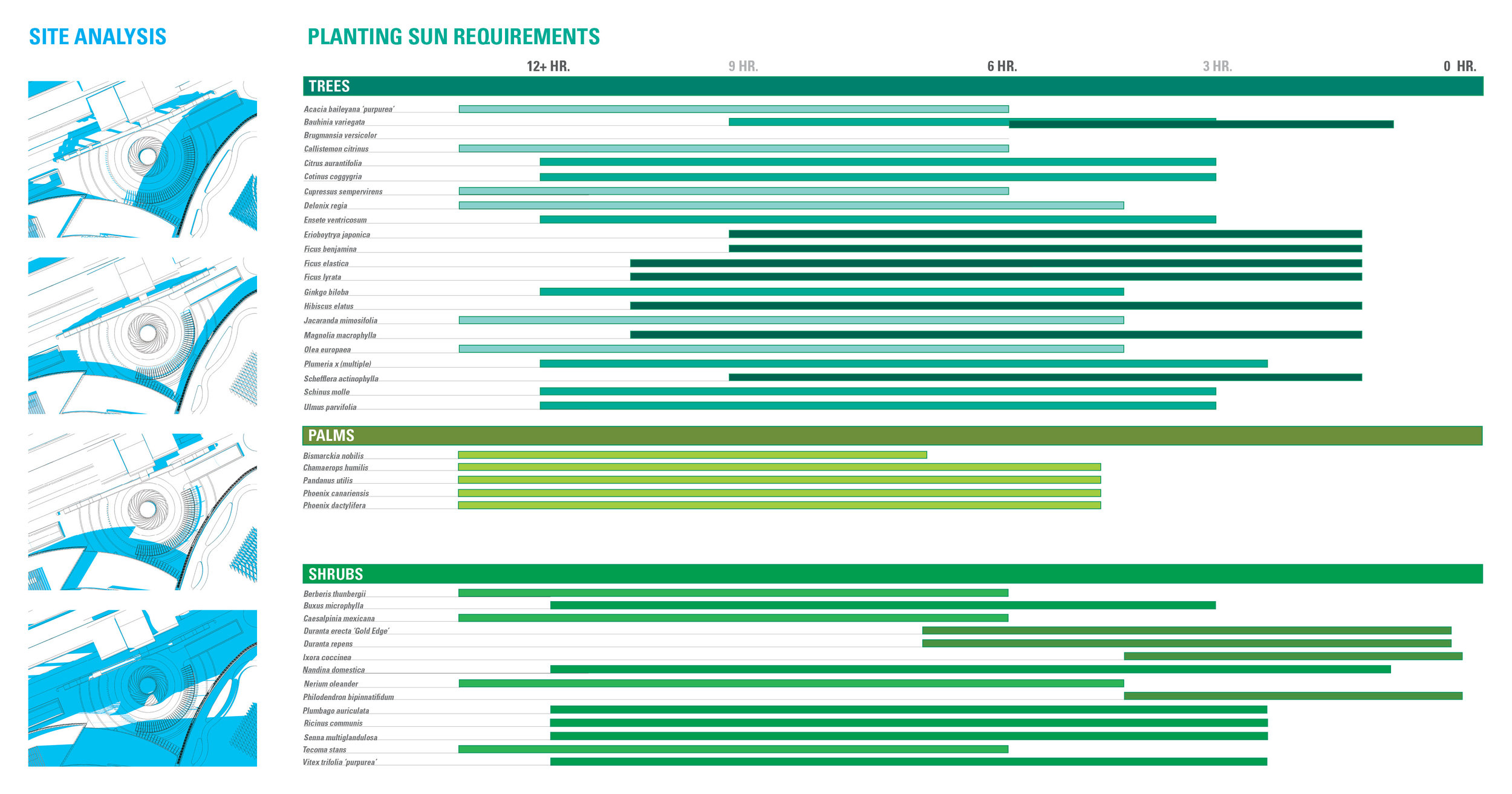
A solar analysis of the project architecture provided valuable insight for the initial planting design and one of the organizing concepts for the plant palette book. Sun requirement tables provide an overview of many species at once with the individual plant information tables organized based on solar exposure and plant type. The design team complied this research information to lead to the creation of ‘more approachable’ graphics in the book to convey information that communicated specific requirements of plant species.
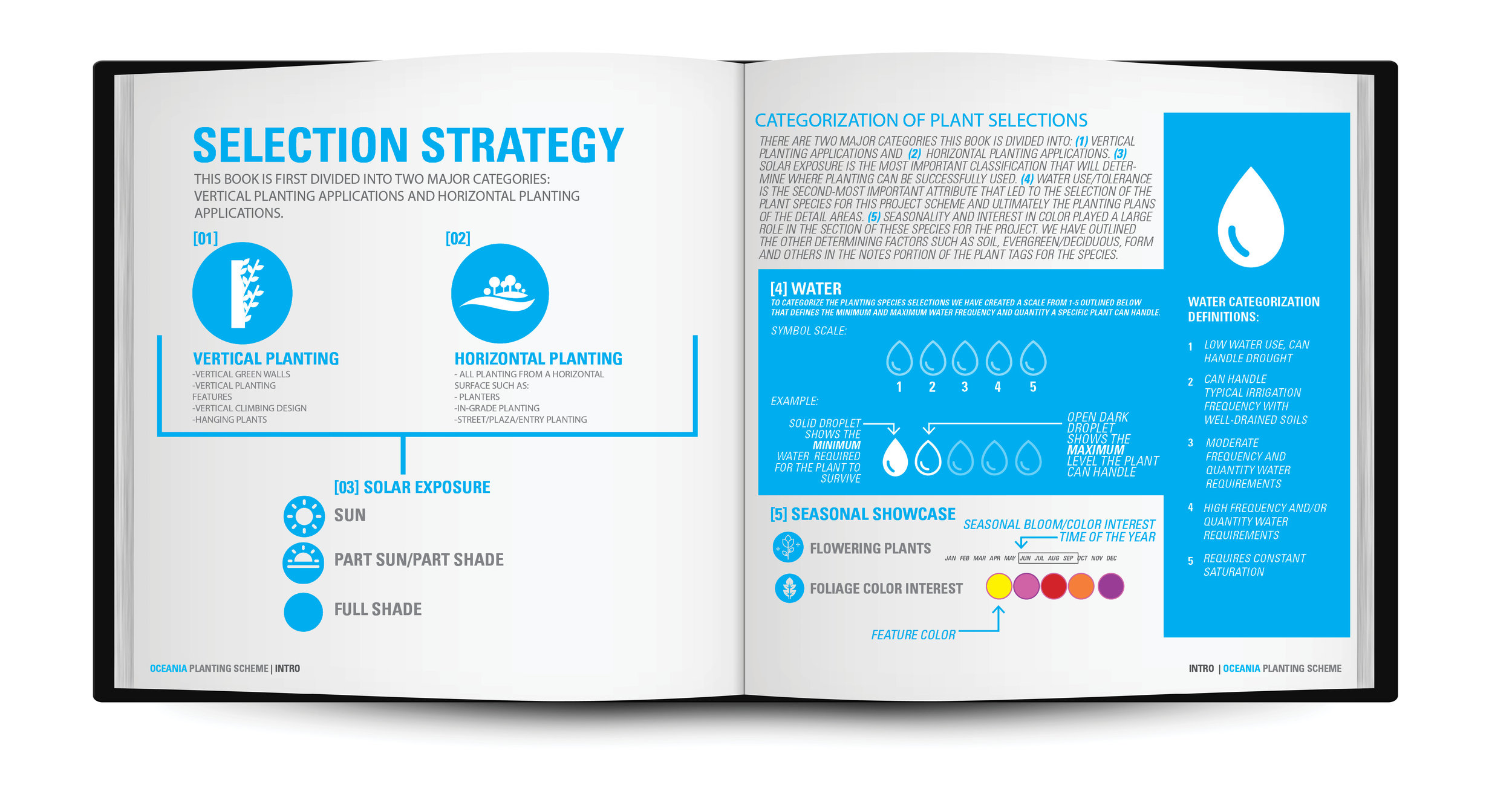
The introduction to the project plant book outlines the selection strategy and explains how a first-time user would use the book. This allows the owner or facility manager to select plants that will horticulturally succeed with the surrounding plantings and environment and have a form complimentary to the original design intent. The importance of this communication is significant in international projects where decisions are sometimes made without consent of the design team during construction and beyond completion. The architecture design team and the client group were pleased to understand the landscape architectural team’s approach early in the process and appreciated the ability to understand the reasoning behind what would become the planting design for the project.
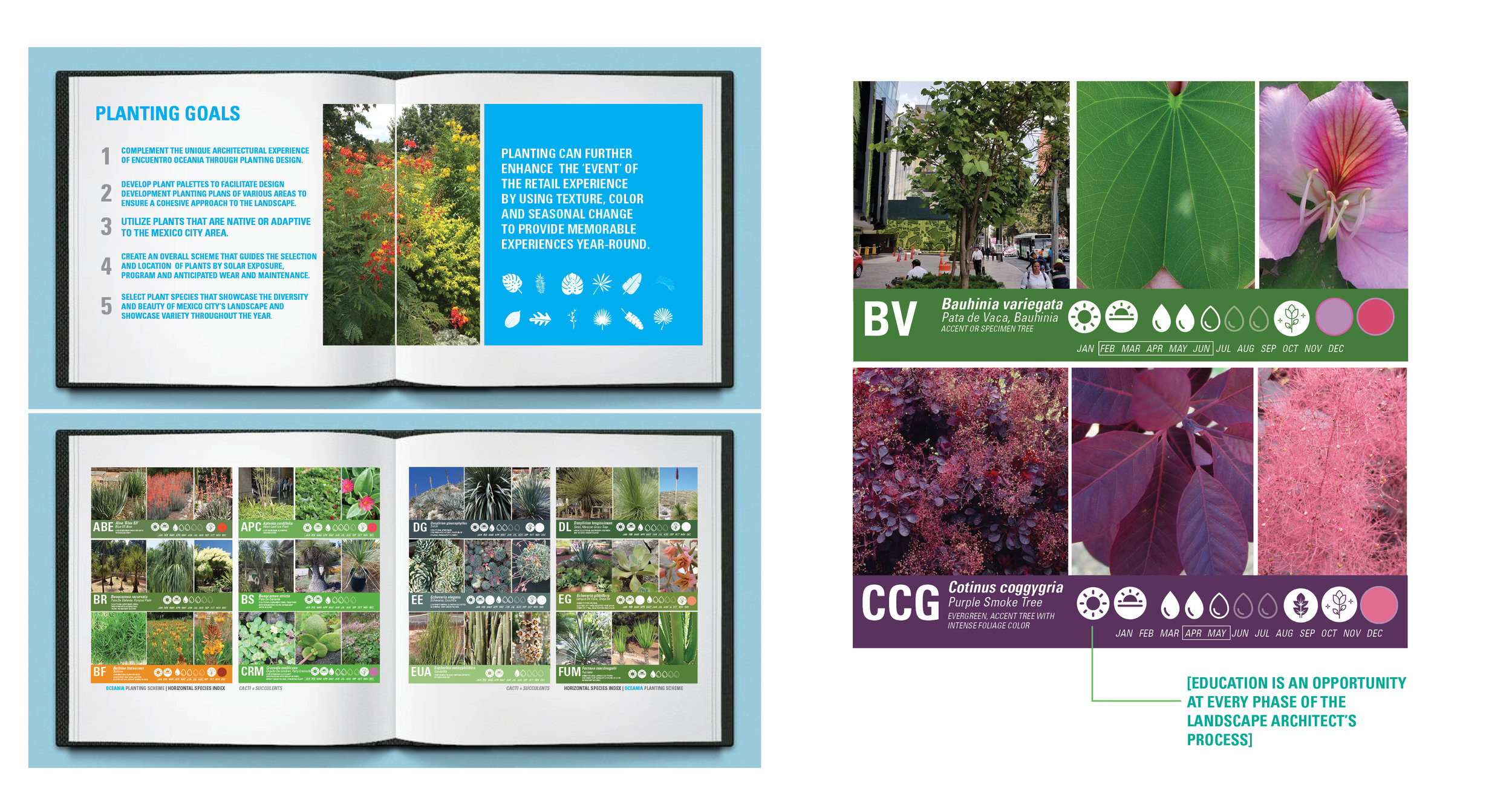
The stated planting goals help future users understand the design thought used to construct the plant palette. Plants are organized based on plant type. At the beginning of each plant type section, there is a listing of different lighting conditions with plants most adapted to that condition. Each plant species has three images that attempt to show different aspects of the plant as well as information on the sun and water requirements and other horticultural details. The plant species identification tags would remain the same through the design documentation so that the book would be relevant through construction and beyond.
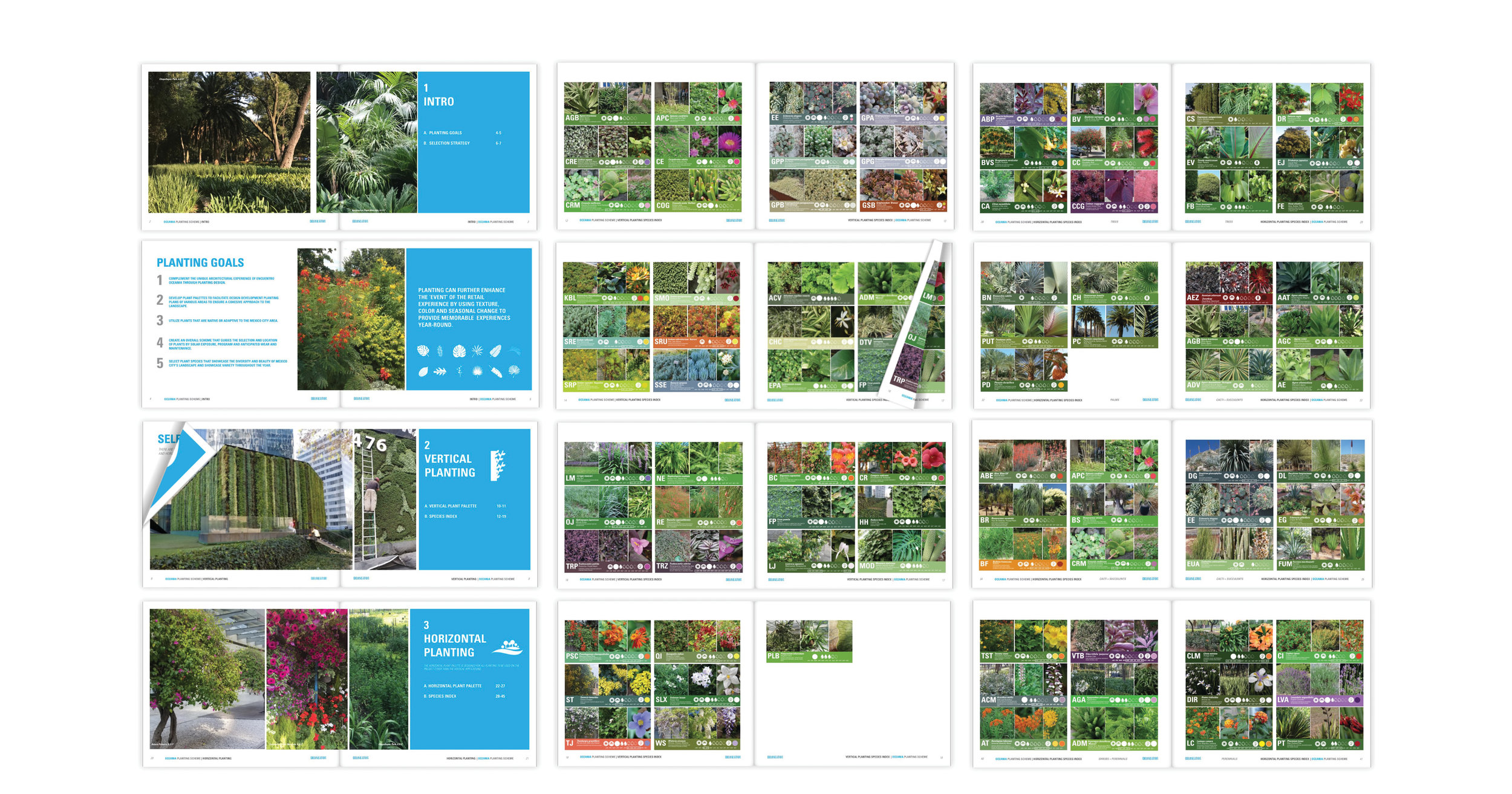
The sixty-page plant resource book provided a comprehensive overview of the different plant species recommended for the Oceania development and provided a graphic, easy to understand manual for future users. The book exceeded the expectations of the design team and client group. The book proved the value in communicating the research and work of landscape architects to the profession. The landscape architecture design team had a goal of educating in designing, instead of simply satisfying a deliverable that meets immediate project needs, which may not actually be understood by the client or others involved.
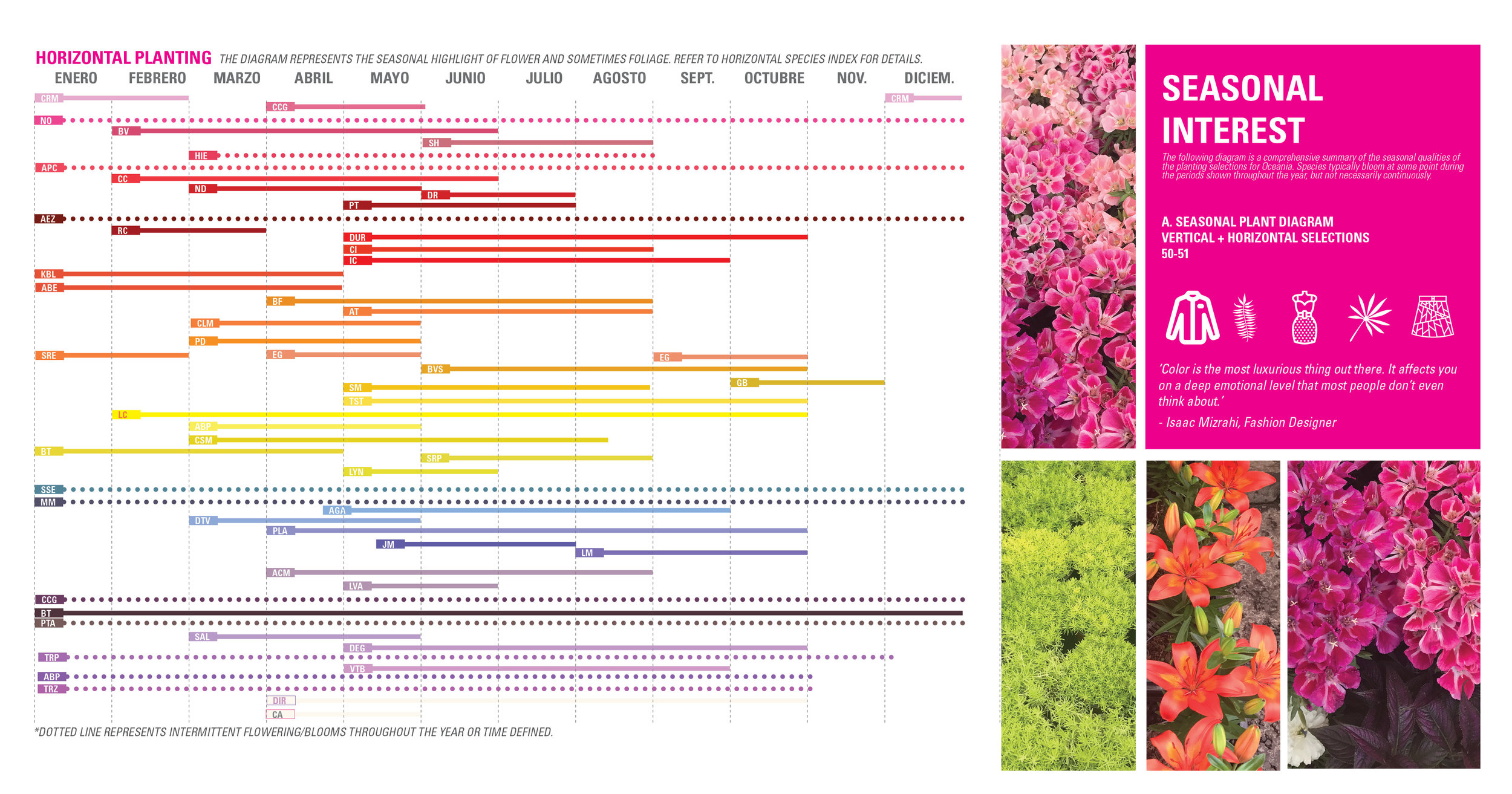
A seasonal interest calendar provides multiple charts that illustrate the color and bloom timing of different plant species to help create dynamic and long-lasting interest in future plantings. It was important to maintain a balance of seasonal interest in this project as a luxury mixed-use environment, but the information communicated was applicable to future projects of the region for the intended client user and design team.
